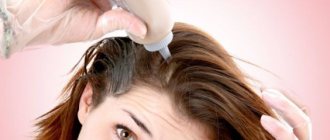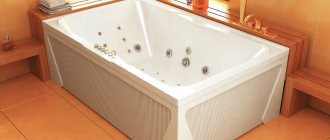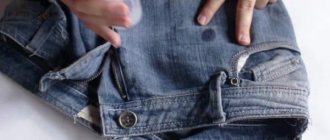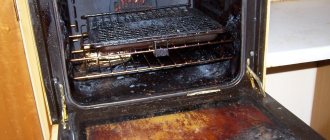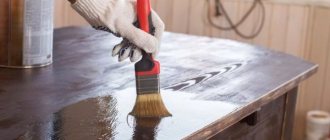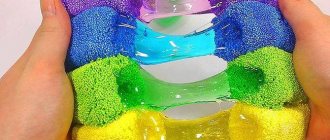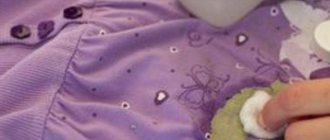How to remove fresh stains
If the paint coat is recently applied, there is no need to use chemicals. Simply moisten the sponge in warm water and rinse the surface. To clean your brushes after use, leave them in water for 15 minutes and then hold them under pressure. When the contamination is fresh, but has landed on a surface that is quickly eaten into, additional products will need to be applied.
See also
25 best ways to clean a suede bag at home
Sunflower oil and laundry soap
It is very difficult to remove even fresh paint stains from clothes, and the result directly depends on the type of fabric. Immediately after the substance gets on clothing, it is necessary to treat the area with sunflower oil and soak for 15 minutes in hot water, after rubbing with laundry soap. After soaking, you should wash the clothes in a washing machine or by hand.
White Spirit
Paint stains can be removed from most fabric surfaces using white spirit. To wipe off paint with a solvent, you need to apply a small amount to a rag or sponge and gently rub it over the dirt.
Isopropyl alcohol
Isopropyl alcohol is an organic solvent. To remove dirt from the surface, you need to apply alcohol and wash it off after a few minutes. If the paint begins to eat in, you should use a hard sponge.
Nail polish remover
You can remove acrylic paint from clothing or fabric surfaces using nail polish remover that does not contain acetone. This is important to preserve the structure and color of the material. Nail polish remover effectively removes only fresh stains.
Ammonia and vinegar
In cases where it is not possible to remove the paint using other methods, you can use vinegar and ammonia. It is enough to soak a cotton pad or soft cloth in the solutions, and then treat the stain until it completely disappears.
Window cleaner and brush
The composition of various window cleaning products contains components that dissolve acrylic.
To erase stains using these products, you need to apply a small amount to the dirt and clean off the acrylic composition with a hard-bristled brush.
Hair fixation spray
Applying hairspray to fresh acrylic paint affects its texture and makes it easy to wash off. The composition peels off from exposure to the varnish, and it is enough to treat the surface with a rag or sponge.
What you need to clean stains
Even if the structure is painted by professionals, traces of acrylic will remain (on the brush, roller, hands). To clean any surface (wood, carpet, wall) you will need special equipment:
- rags;
- gloves (rubberized);
- sponges;
- brushes (preferably they have hard teeth);
- something sharp (knife, blade);
- construction mask, goggles (they are needed as personal protective equipment).
Cleaning up acrylic paint is much easier when the stain is fresh. If the acrylic mark was made recently, you can wash it off within an hour with plain water. It is necessary to dip a sponge in a container of water, then gently wipe the stain with it. To make the cleansing effect more pronounced, it is recommended to use detergent and soap.
Paint stains on upholstery or carpets should be removed before they dry.
Within 24 hours after the stain has been placed, acrylic can be cleaned with water, a brush, or a degreaser. Adding a small amount of soda or vinegar to the water will help speed up the process of removing paint from the surface. This solution wipes away the dirt.
After painting is finished, the question arises: how can you wash your brush from acrylic paint that has dried to the bristles? This is quite easy to do (if you don’t forget about the dirty brush for a few days). You can wash your brush off acrylic paint by immersing it in hot water for half an hour. After 30 minutes, take out the brushes and wash them with soapy water. If the brushes have hardened, acetone will help soften them.
Difficulties arise when it is necessary to remove dried contaminants. In its liquid state, the acrylic mixture can even be washed off or wiped off. But once it sets, the strong, dense mass will not yield to water.
Facades painted with acrylic paint are not washed off by the rain. And that's great! But in order to clean the surfaces from paint splashes after finishing work is completed, the durability of the coating becomes a certain problem.
The method for removing dried paint depends on its location:
- If the stain was on a hard surface, the paint could not penetrate. Then you will need something sharp to remove it. For example, drops of paint can be cut off from metal and ceramics with a knife. The surface will not be damaged.
- Remove paint from the surface of the tile with a scraper, spatula or blade. Using gentle movements away from you, gradually scrape off the paint. With enough care and slow work, the surface will become clean. Scratches will not appear on it. The cleaned tiles are washed clean with soapy water and wiped dry.
- Removing contaminants from linoleum and plastic requires greater care. Although these materials do not absorb paint, they have a softer structure. Rough pressure from the cutting tool can damage them. Therefore, you need to act carefully, gradually. You can pry off the stuck blot with a spatula. A few careful but persistent movements, and the paint peels off.
- Any paint that gets on the window during repairs must be washed off with a special product. Modern household chemicals cope with almost any contaminant. Paints are no exception. A good glass cleaner should be sprayed over the surface, paying special attention to stains of dye. After a couple of minutes, you can wipe off any loose particles from the glass with a soft cloth.
- Removing paint from wood takes place in several stages. The upper part is removed with a spatula or scraper. Then comes the turn of fine-grained sandpaper. With its help, you can remove paint from a wooden surface almost to the very base. In order not to damage the product, the remaining thin layer should be washed off with a cloth soaked in alcohol. When dirty, replace the rag with a new one. This continues until the stain is completely removed. The treated area will have to be polished.
We suggest you familiarize yourself with How to remove oil paint from clothes at home, how to quickly and urgently remove a stain, and how to remove dried stains?
- The greatest difficulty is removing paint from the surface of the fabric. The fact is that once acrylic gets on the woven material, it is absorbed into it. Even with timely cleaning with water, the dye is not always completely removed.
Removers have been developed for each type of paint. This product makes stain removal easier. The remover is applied to the fabric, dissolves the paint, and then rinsed with water. The disadvantage of the wash is an unpleasant odor.
Helpful Tips:
- When purchasing acrylic paints, you should familiarize yourself with their composition. The best choice would be those that do not contain ammonia or other substances harmful to humans.
- It is known that acrylic paints are diluted with water. Using hot water will cause it to set faster. Cold water, on the contrary, will somewhat slow down the hardening, which, in particular, is very important for removing random drops.
- You won't have to worry about random stains if you thoroughly prepare for the job. To do this, you need to cover the furniture that remains in the room being repaired with film. You can put thick paper or polyethylene on the floor.
- Even when the paint does not emit an unpleasant odor or sting your eyes, you should not abandon personal protective equipment. Goggles will protect your eyes from the smallest splashes, a petal mask will protect most of your face, gloves will protect your hands, and comfortable work clothes will protect the rest of your body.
To learn how to remove acrylic paint, see the following video.
Recipes for removing old stains at home
Dried acrylic paint is much more difficult to remove than fresh stains. In domestic conditions, various substances can be used for this purpose, which differ in composition, method of application and effect on pollution.
See also
Ways to clean a hair straightener with a ceramic coating from carbon deposits
Vinegar
To remove stains, vinegar is mixed with ammonia and salt. The surface from which the acrylic composition needs to be wiped off is first washed with cold water, then a sponge or lint-free cloth is soaked in the prepared solution and the stains are wiped. As the sponge dries, it is re-wetted in the solution. The procedure is performed until the desired result. After finishing the work, you should wash off the remaining solution with water.
Soda
Using baking soda is suitable for removing small paint stains. The contaminated area must be completely covered with a layer of soda and begin to rub with a moistened sponge. Remove any remaining product with a clean cloth.
Detergent
To remove stains with detergent, you must first blot the surface with warm water. Then rub the stain with the product using a sponge and leave for 3-4 hours.
After this time, the detergent is washed off along with the remaining acrylic paint.
Acetone
The constituent components of acetone allow you to effectively scrape dried acrylic composition from the surface. If the paint has dried for a long time and you need to wash it off, you will need to soak a cotton pad in acetone, apply it to the area and wipe with force. It is necessary to treat the stain until the desired effect is achieved. For processing, you can use pure acetone or nail polish remover containing this substance.
Refined gasoline
When using gasoline to remove stains, you need to soak a cotton pad or rag in pre-cleaned gasoline and then wipe the stained area. If you need to remove stains from clothes, then after treating with gasoline, you need to rinse the item in clean water and wash it in a machine for final cleaning.
Kerosene
Since kerosene is an aggressive substance, when using it it is necessary to use protective gloves and a respirator. To clean the surface, you need to apply kerosene and wipe with a sponge. The film former of the acrylic composition softens within half an hour, and during this time it is necessary to perform the wetting procedure several times. After the paint peels off, you can replace the sponge with a soft cloth with a more durable base.
See also
TOP 10 means to clean your LCD TV screen at home
Turpentine
Turpentine is often used to dilute varnishes, so using it in larger quantities allows you to effectively wash off the composition from different surfaces. The cleaning procedure is standard and involves applying turpentine to a cloth or cotton pad and further treating the surface.
Denatured alcohol
You can remove a layer of paint with denatured alcohol using the basic method. The contaminated surface is treated with the product and wiped with a brush.
Removing acrylic paints from floors and walls
Be sure to take care to protect your hands and respiratory tract. Especially if you work with chemicals or overly aromatic substances. It also helps to ensure proper ventilation. Better yet, point the fan towards the window so that the vapors are blown out the window.
- You need to lift the paint with a pointed tool. Since wood often has a shiny finish and plastic is quite fragile, it is best to use the pick-up method before resorting to chemicals. Use a sharp knife to carefully loosen the edge of the paint stain and try to lift it up.
- You can try to wash dried paint with soapy water and add a little strong detergent. This is one of the best options, which will make it possible to wash the paint without damaging the coating. To do this, you just need to wet the sponge and rub the dirty area well.
- You can also use an alcohol solution (alcohol is replaced with acetone or an alcohol-based disinfectant). Dip the edge of a cotton swab or paper towel into the solution. Then gently wipe the paint stain, trying not to rub it over the entire surface, but to concentrate it in one place.
- If the paint has dried, remove the top layer with a scraper. This could be a spatula, a kitchen knife, a paint scraper, or even the edge of a shovel if there is a large area. If it does not give in, then moisten it a little with plain warm water. Cover with a cloth and leave for some time.
The dried stain needs to be scraped off a little with a spatula.
- Any glass cleaner is perfect for plastic, even a common glass spray. It should be sprayed onto the contaminated area, and after 15-20 minutes, rub well with a sponge.
- A construction hair dryer works great with any type of paint, especially acrylic. It needs to be aimed at the stain and wait for the pigment to heat up. Then you need to remove the top layer with a spatula and wipe with a damp cloth. This method is very suitable even for painted walls or wallpaper.
- Ordinary baking soda helps fight many stains and even paint stains very well. It needs to be sprinkled liberally onto the paint and covered with a damp cloth. Then rub well with a sponge and wipe dry.
- Vinegar can be used as a gentle agent on any surface. To do this, it is diluted in water (if the stain is fresh) or simply poured over the contaminated area. After 10 minutes, wipe everything well with a rag.
- For stains that last 24 hours or more, when folk remedies can no longer cope, then use any solvent that we indicated at the very beginning. You need to moisten a cloth, for example, in kerosene or spirit. Apply for a few minutes (depending on the age of the stain) and rub well with a sponge. Simply wash off any remaining residue with a damp cloth.
We invite you to familiarize yourself with how much a kitchen hood consumes: what power and performance does it have?
Regular baking soda also works well on stains.
When painting, acrylic can get on a table, chair, floor, wall, wallpaper, or any surface that is not covered with a protective film. If there is an acrylic paint stain on the linoleum, you can remove it with a knife. But this type of coating is susceptible to mechanical damage, so you need to act carefully.
If acrylic accidentally gets on materials such as metal or plastic, it is not necessary to use the solvents and chemicals described above. You can use a sharp object to scrape off the paint. You can clean acrylic from a hard surface using a blade or knife.
Acrylic paint can be easily removed from linoleum using a spatula.
To remove acrylic from a wooden surface, use a gel remover. After you put on personal protective equipment, prepare the premises for working with the chemical; pour the remover onto the floor and spread it evenly over the surface with a spatula. If some stains still remain, they are removed with a spatula. Then the floors are washed with water.
To clean windows, ceramics, tiles, use a blade, spatula or a special cleaner. You can purchase such a product in specialized stores. A specialist will help you choose the appropriate solvent. When choosing the right product, the consultant will take into account the following nuances:
- material from which the stain is removed;
- number of layers applied;
- the strength of paint adhesion to the surface;
- type of paint applied.
Heating is also a very popular proven method for removing acrylic. This folk method is used for cleaning hard and fabric surfaces. The essence of the method is the ability of high temperatures to soften polymers.
If you need to remove acrylic paint from clothes, you will not be able to completely remove the paint using the method described above. In this case, you need to use a more powerful tool. It could be the windshield wiper. To heat the stain on the fabric, you can use an iron rather than a hairdryer. The fabric surface is ironed through foil.
There are many ways to clean acrylic paint from clothes and other surfaces at home. But it’s still better to prevent paint from damaging your favorite things, furniture, and floors. To do this, work is carried out in special clothing and attention is paid while painting with acrylic.
Features of removal from various surfaces
The nuances of washing off acrylic depend on the type of surface. It is important to consider several features to achieve the desired effect.
Linoleum
Linoleum is resistant to damage, so the paint can be scraped off with a knife. For peeling, you can use acetone or any solvent.
Tile
The process of washing acrylic from tiles is carried out in a similar way to cleaning linoleum. You can use any chemical.
Glass
For glass processing, it is better to use white spirit. To scrape off any remaining paint, use a sharp blade.
Plastic
To avoid damaging the plastic, it is better to use organic solvents for flushing. Wipe the surface with a soft cloth.
Brick
You can remove paint from brick using gasoline or kerosene. The products will not damage the brick and will effectively wash away the acrylic composition.
Concrete
Concrete can be treated with any type of solvent. The variability of choice is related to the structure of the concrete.
Wallpaper
It is better to remove paint from wallpaper using natural solvents. The use of chemicals may cause the wallpaper to change color.
Textile
Acrylic compounds are strongly absorbed into the fabric. To remove stains, you need not only to treat with a solvent, but also to wash.
Remove acrylic from a car
It is better to remove paint from the car before the stains dry. Add shampoo or dish detergent to a bucket of warm water. A soft sponge is moistened in liquid and gently passed over the contaminated surface.
If the drops have hardened, it is better to use chemical solvents. Acetone, which is used to treat car parts, will help remove acrylic from plastic, metal and fabric. After the top layer has softened, carefully scrape off the dirt with a brush. Aggressive substances are prohibited from being used on a painted car body.
We recommend: Types of dry cleaning: which one is needed right now?
White spirit will remove paint without affecting the appearance of the car. The drug is applied to the stains, left for 15 minutes, then wiped with a sponge. Dirt is removed from the glass using a thin blade. To avoid damaging the bodywork, do not use rough scrapers. Removing drops can take place in several stages: gradually remove all layers.
If the stains are dry, then special chemicals are preferred:
- Clay for cleaning. The kit includes an abrasive and a cleaning spray. After removing the stains, treat the area with polishing wax.
- Brake pad cleaner. A rag is moistened with the solution and gently rubbed over the area with the stain.
- Anti-scratch paste. It will help you safely wipe off pigment from the surface. The mixture is applied to a porous cloth and the stained areas are slowly wiped.
Composition and properties of acrylic varnish
Acrylic varnish is a transparent mixture of water-based components. It consists of:
- liquid polymers;
- antiseptic substances that protect the surface from the effects of temperature, moisture and microorganisms;
- plasticizers that create an aesthetic, even and smooth top layer.
This information is necessary to understand how to remove acrylic varnish. To completely eliminate unnecessary stains, various solvents are used. Among them, ordinary leather, as well as products based on gasoline, ethanol, and diethyl are considered the best.

